Everything you need to know about Nowruz and its beautiful history. Learn more about this Persian tradition that spans all the other holidays for many people around the world.
It's time for me to tell you about Nowruz and all the amazing things about it including delicious food and sweets. In this post you're going to learn everything about Persian New Year and the traditions that come with it.
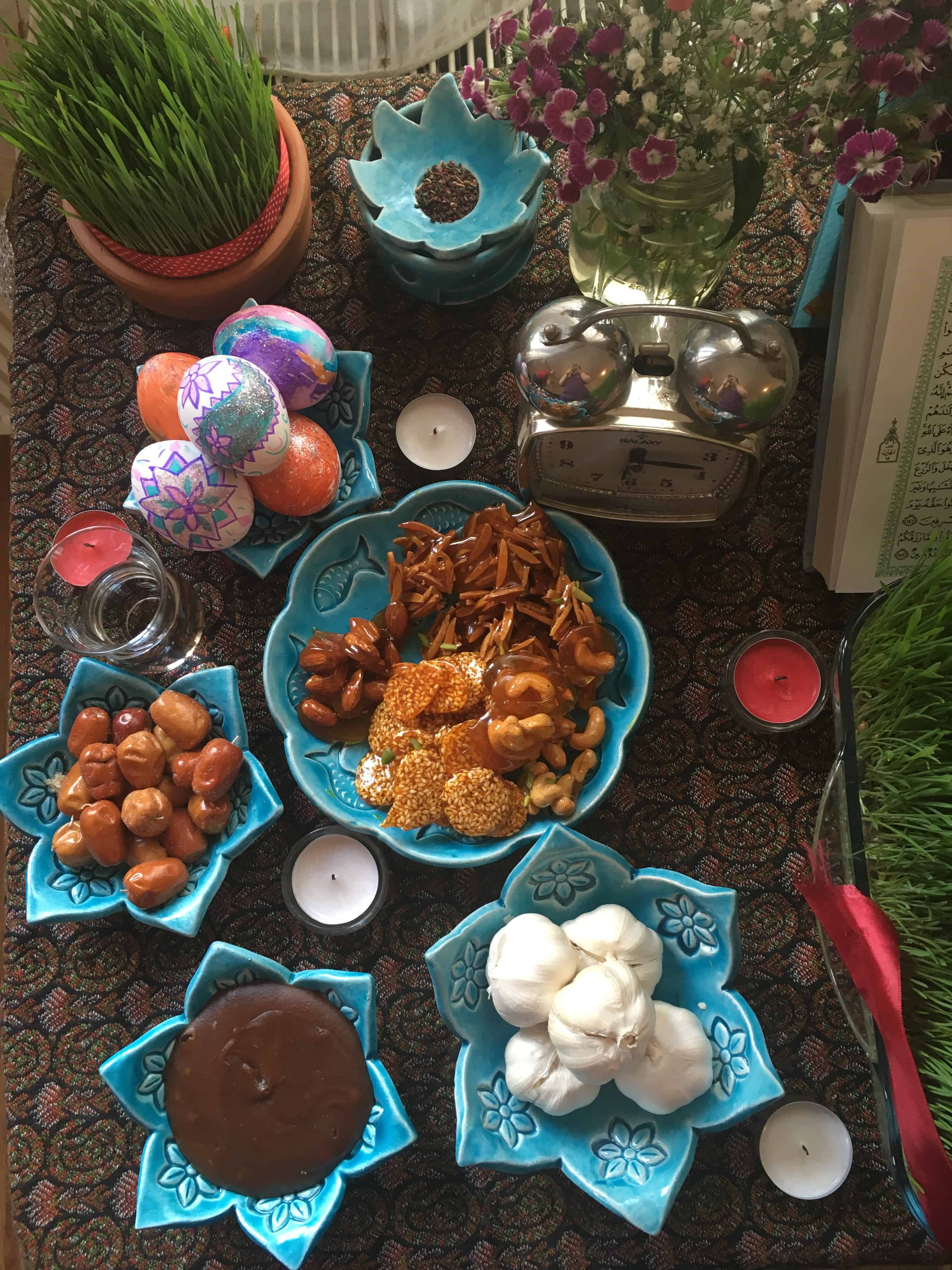
Table Of Contents:
What is Nowruz?
Nowruz (pronounced No-Rooz) is a Persian word literally meaning "New Day". It's a celebration for the new year that starts with the first day of spring. You could call it a traditional festival of spring. Many people around the world start their year on Nowruz which is the first day of spring. Norooz is the celebration of winter ending and spring starting.
Nowruz marks the vernal equinox which is the first day of spring in the northern hemisphere. It happens on March 21st or the previous/following day depending on where you live.
Origins of Nowruz
Nowruz has been celebrate for over 3000 years in Iran and other countries. Its origin is from Zoroastrianism, a Persian ancient religion that dates back about 3000 years ago. Since many countries where part of the ancient Persian empire then, Nowruz is now celebrated by millions of non-Iranians around the world as well.
Read more about the origins of Nowruz.
Where is Nowruz celebrated
Nowruz is celebrated in many countries in central Asia, western Asia, the Black Sea region and the Balkans. Countries like Afghanistan, Azerbaijan, Tajikistan and Kazakhstan celebrate this day alongside Iran and each have their own beautiful traditions and dishes that they serve during the festivities.
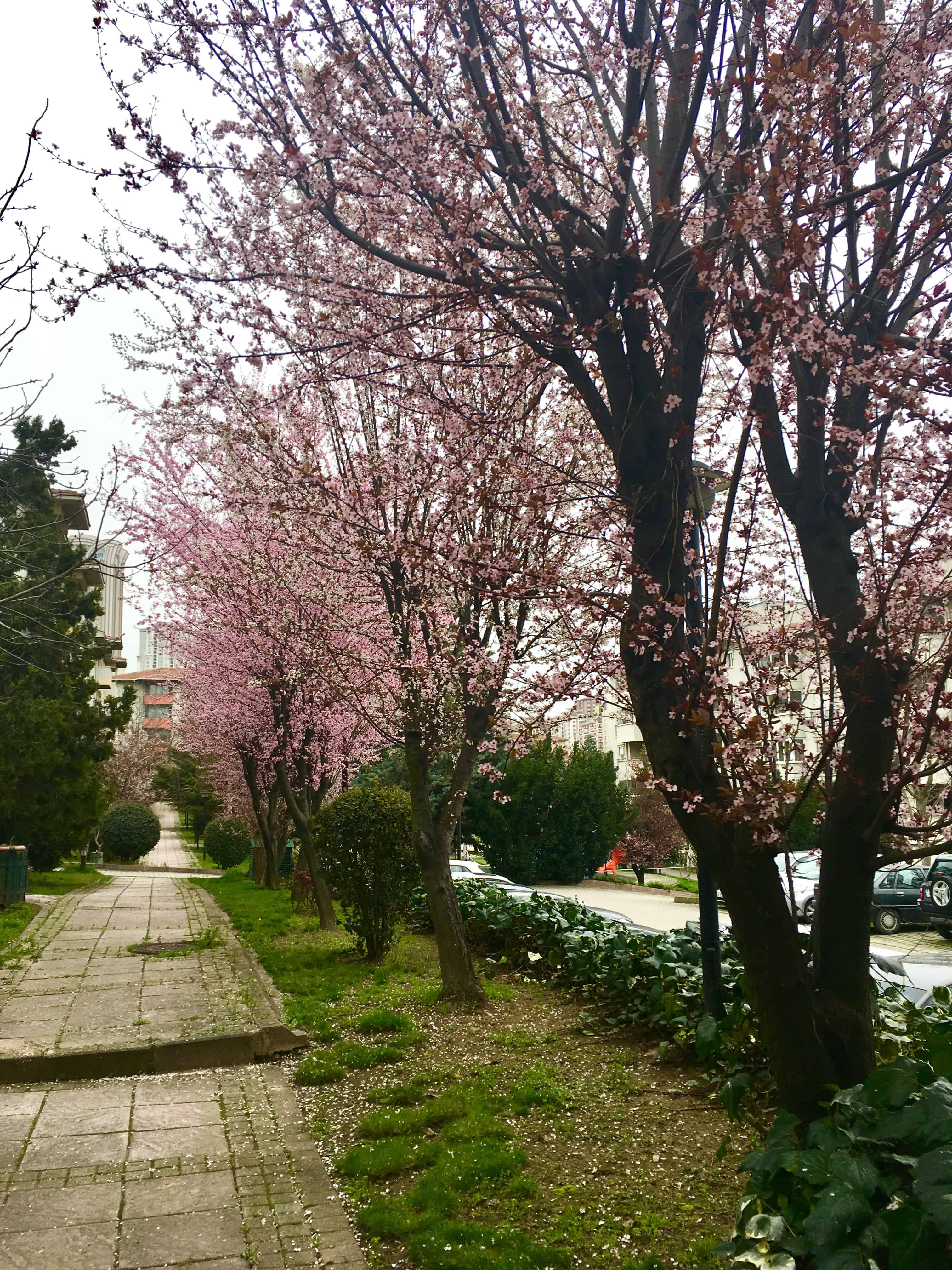
How do Persians celebrate Nowruz?
Preparing for Persian New Year celebration starts a few weeks before March 21st. It starts with a massive spring cleaning in each house called Khaneh-Tekani which literally means Shaking the house. It's a chance for everyone to deep clean their homed in spirits of welcoming spring. It includes de-cluttering, washing carpets, painting walls if needed and so much more. This deep cleaning will make everything feel new and ready for a new start.
Buying new clothing for family members and kids is another part of preparation. Kids always look forward to Nowruz because it means they're getting new clothing that they can show off in Eid-Didani, the act of visiting friends and relatives during Nowruz for the new year.
Iranian buy lots of nuts (Ajil) and sweets (Shirini) in the last days before Nowruz to serve their guests. Ajil usually contains almonds, pistachios, hazelnuts, walnuts, raisins, roasted chickpeas, peanut and cashews which are either raw or roasted. Each Iranian has their own favorite Ajil store that they buy their New Year ajil from year after year.
The last but certainly not least of the rituals is Char Shanbe Suri which happens in the evening of the last Tuesday of the year where people set up small bonfires around the city in public streets or private properties and jump over it. This is an old tradition which believed that the flames of fire will take away all the bad spirits and energy.
What is Haftseen?
Hafseen, meaning The Seven S's is a set of items that every Iranian set in their homes as a Nowruz ritual. Each of these seven items has a meaning related to spring and starting a new year. Some of the most common items for Haftseen are:
- Sabzeh (Sprouted wheat grass): Symbolizes re-birth and greenery
- Serkeh (Vinegar): Symbol of aging and wisdom
- Senjed (Dried fruit of a lotus tree): Symbolizes love
- Samanoo (Sweet wheat pudding): Represents affluence
- Seeb (Apple): Symbol of health and fertility
- Somagh (Sumac): Symbolizes the color or sunrise
- Seer (Garlic): Symbolizes medicine
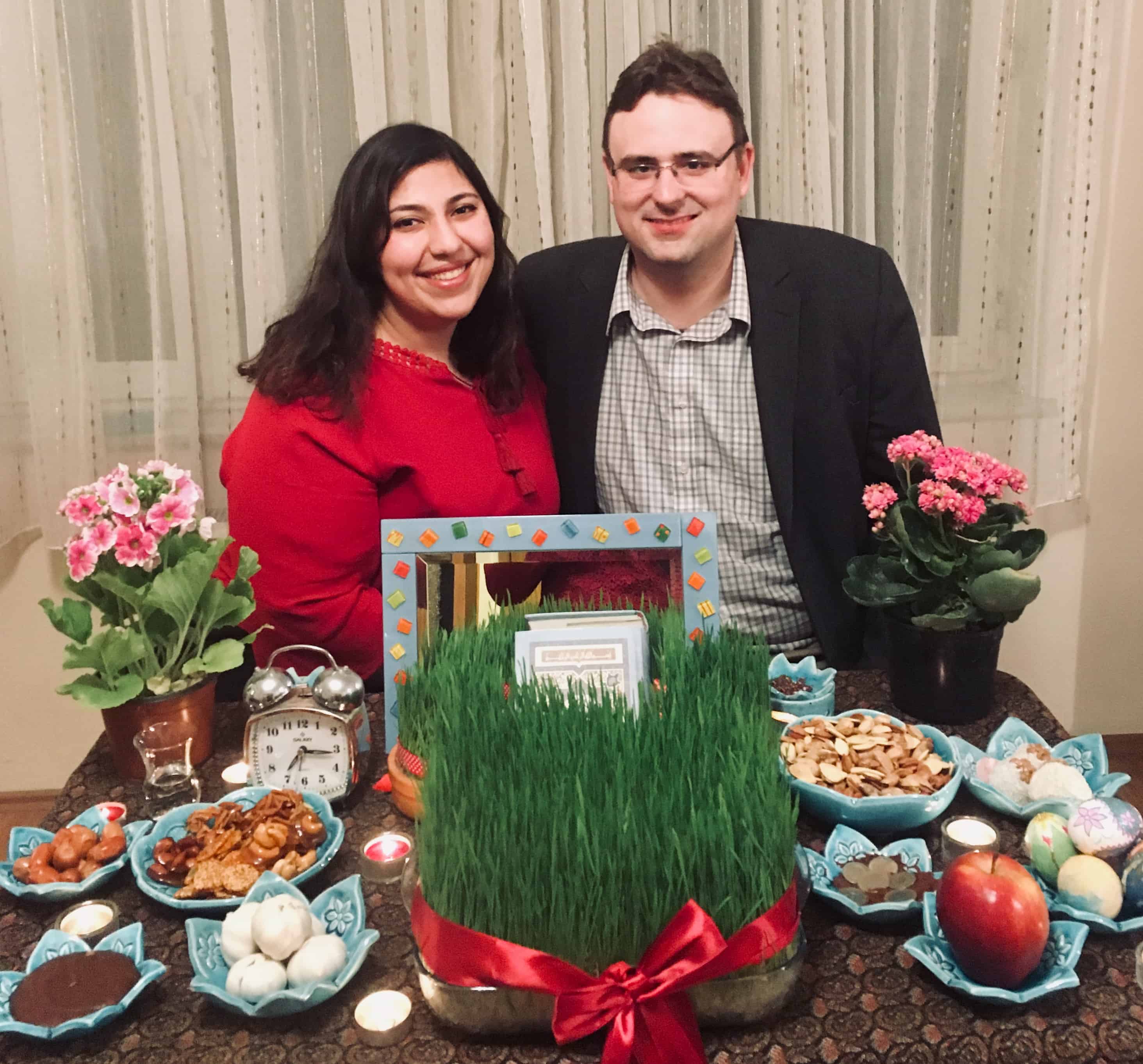
There are two additional "Seens" that you can commonly find in haftseen:
- Sekkeh (Coins): For wealth
- Sonbol (Hyacinth): A flower special to spring
What do Iranians eat for the new year?
Food is an important part of Nowruz for Iranians and we make different dishes and sweets to celebrate the beginning of spring. Here are some of my favorite Nowruz recipes:
- Sabzi Polo (Persian Herbed rice) made with fresh herbs and a delicious lettuce tahdig.
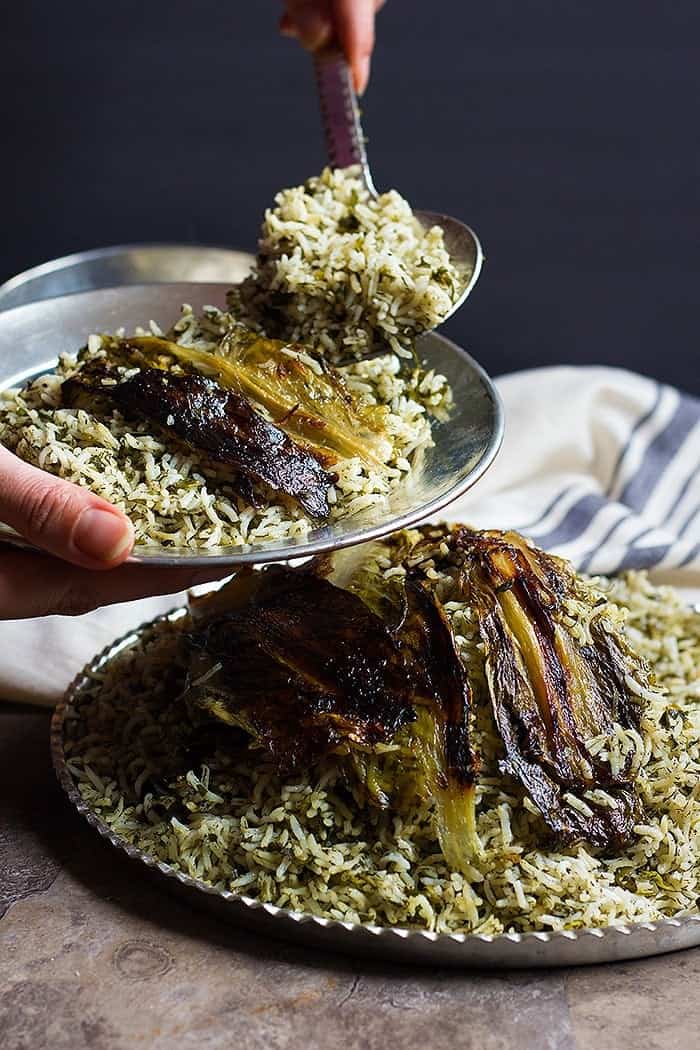
- Mahi Shekam Por (Fish stuffed with pomegranates and walnuts) This dish is so flavorful and goes perfectly with the herbed rice.
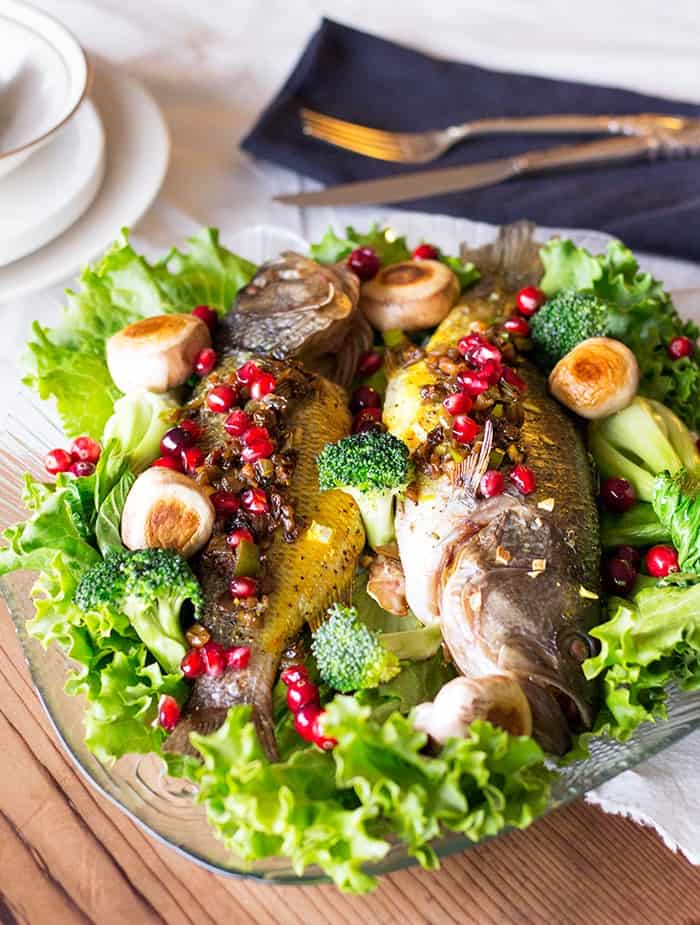
- Kuku Sabzi (Persian herb frittata) made with fresh herbs which represents life and growth.
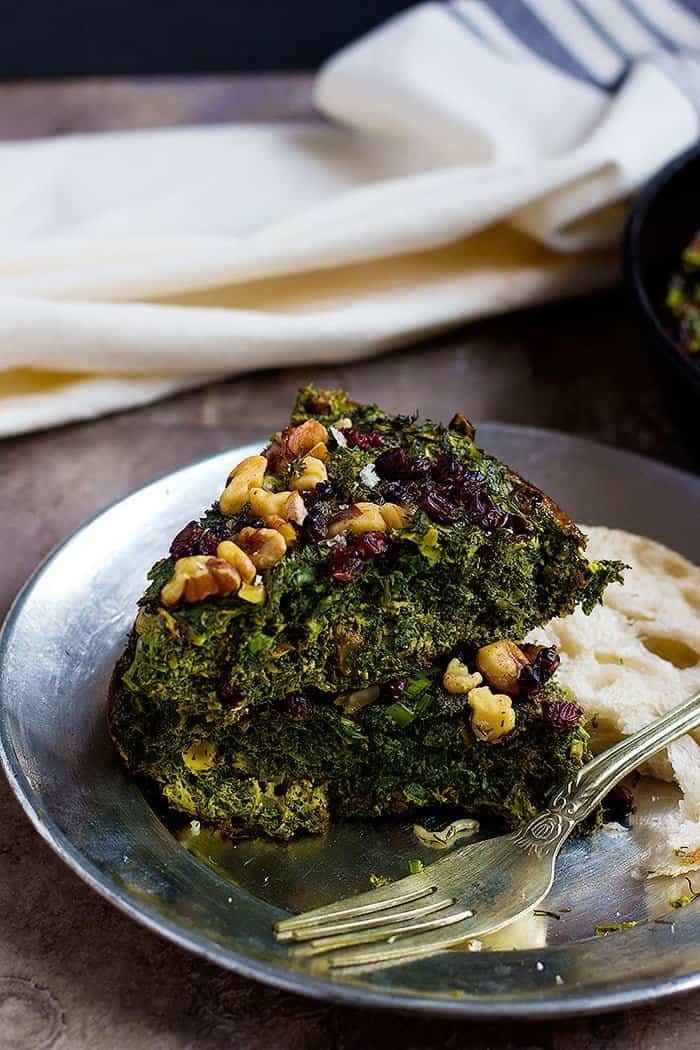
- Ash Reshteh (Persian noodle soup) made using fresh herbs and legumes.
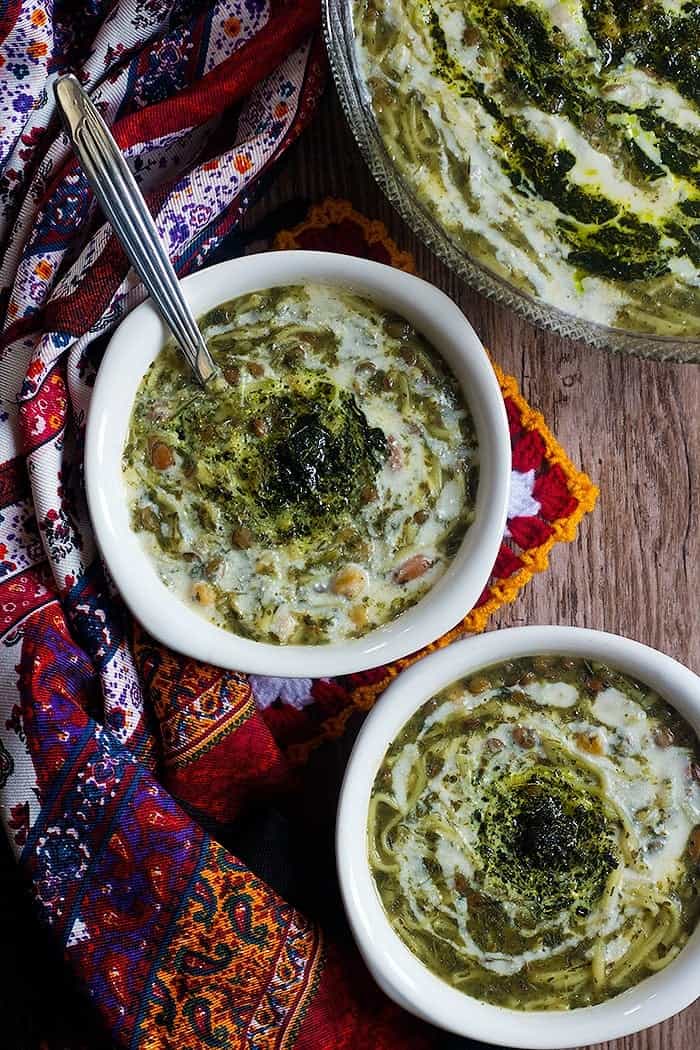
- Qottab (Persian walnut filled pastry) these are traditional Persian pastries that are sweet and flaky, filled with a combination of walnuts, sugar and cardamom.
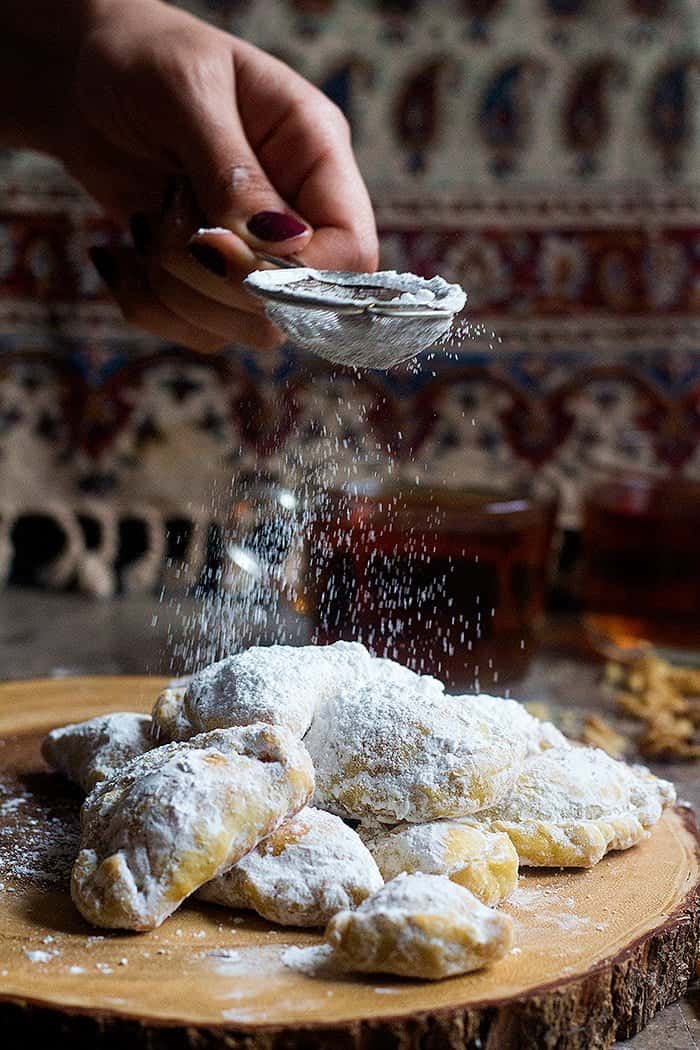
- Shirini Keshmeshi (Persian raisin cookies) I love these, they're easy and for us Iranians they're what chocolate chip cookies are for Americans.
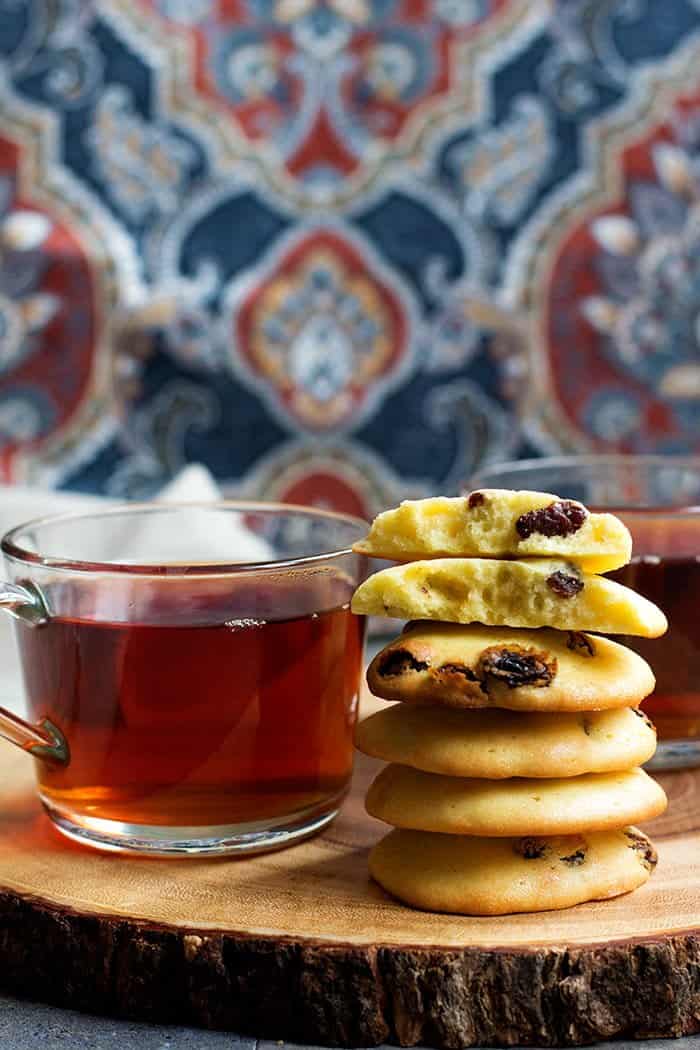
- Shirini Nargili: These Persian coconut cookies are a must. They are chewy and easy to make with no chilling time needed!
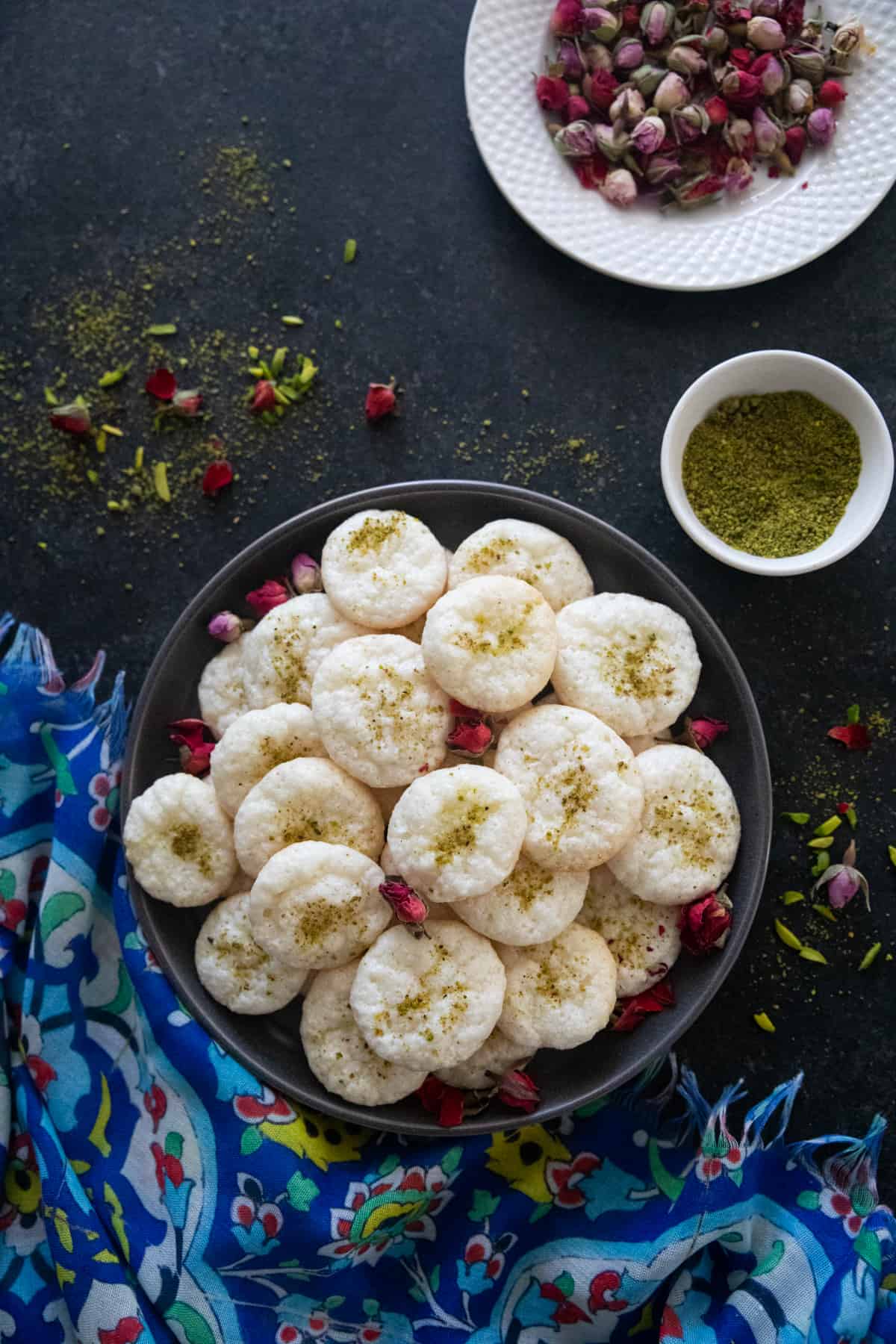
- Pofaki Gerdooyi (Persian walnut cookies): An all time favorite, these are gluten-free and ready in 30 minutes. The texture is very unique since the cookies are crispy on the outside and hollow on the inside!
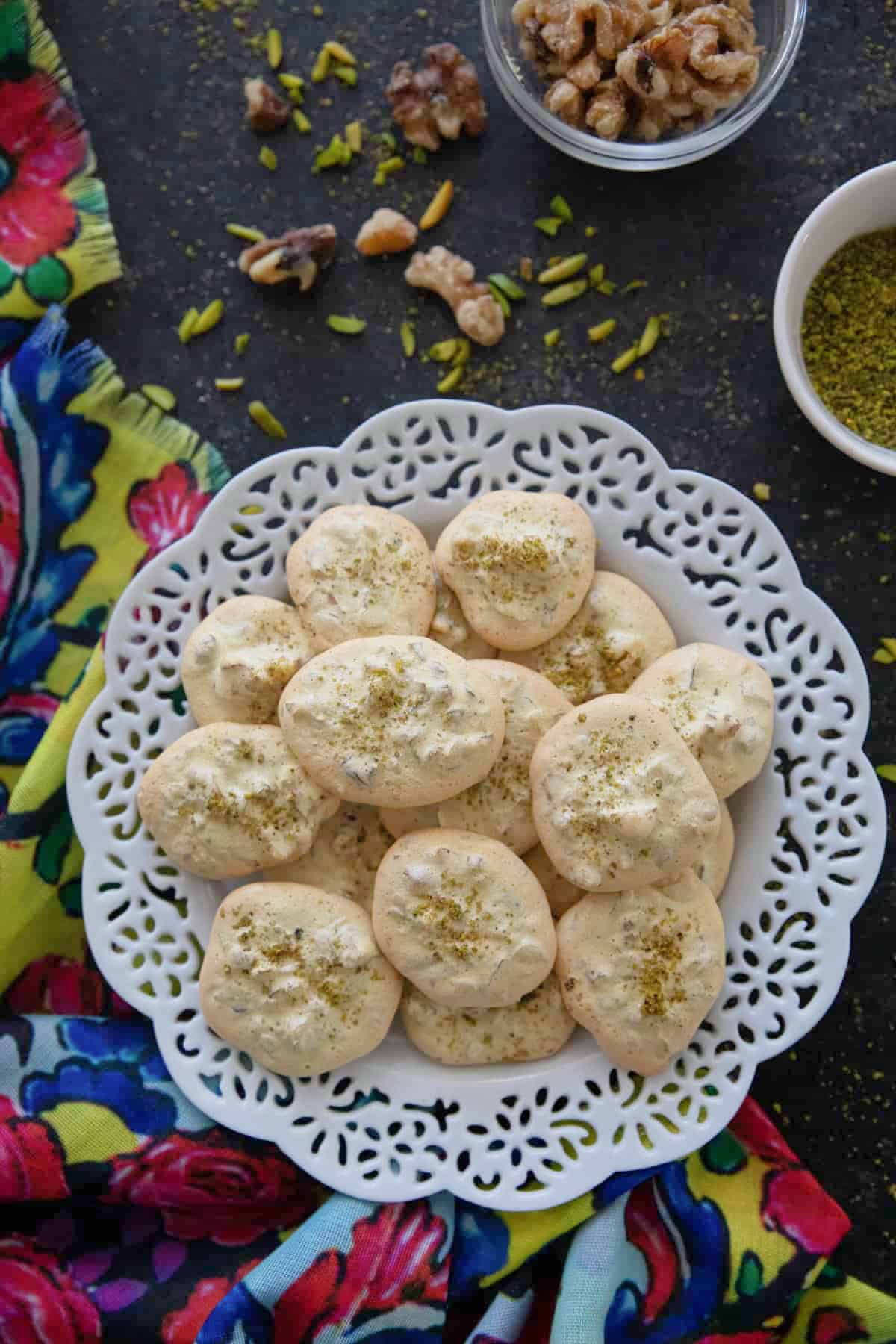
- Nan Panjereh (Persian Rosettes): These have been in my family for a few generations, my grandma used to make them for Nowruz and then my mom and now me.
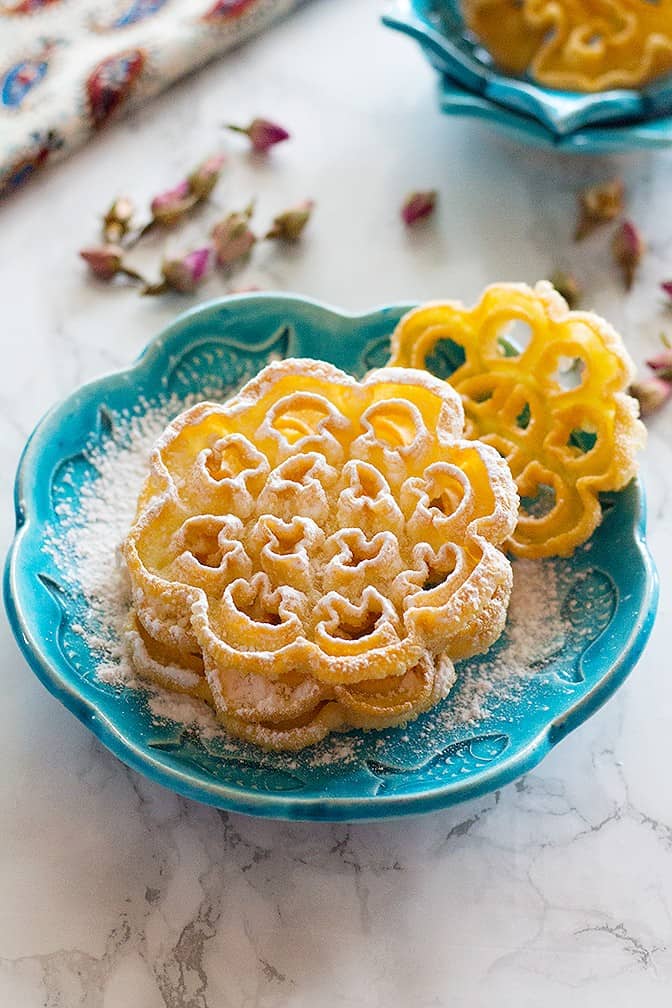
May Nowruz bring so much happiness to you and your loved ones, Nowruz Mobarak!
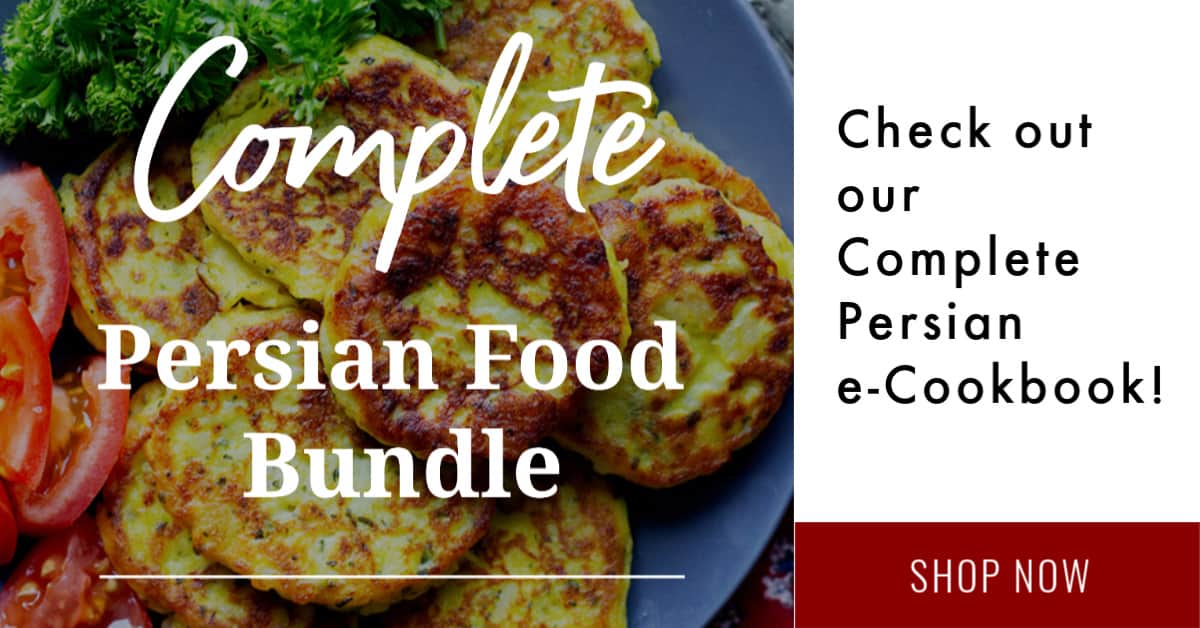

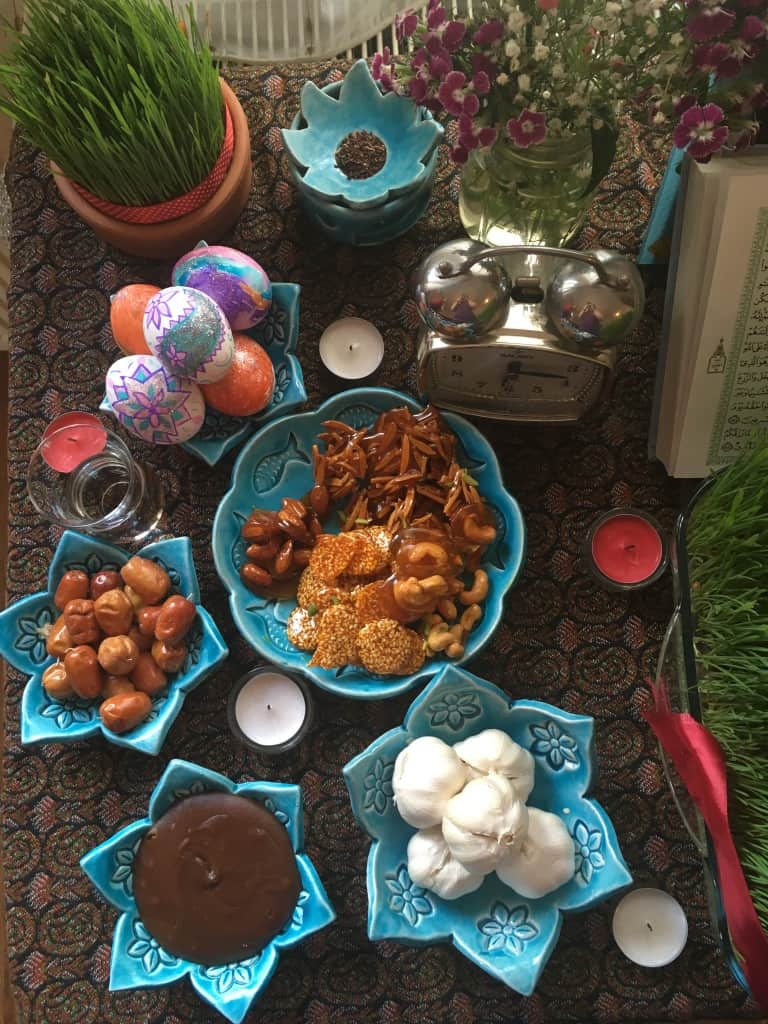
Nikki Kaivani Moranville
Shadi, I just want to thank you for this post. Not only is it informative about the celebration, but someone has actually told Americans how to pronounce Nowruz! When looking at international recipes, I think it is important to give some type of pronunciation guide to things people have never heard of. I have a lot of reasons for loving Persian food - one of them is that my first husband was from Iran. Gone too soon, but I still like to celebrate Nowruz with something special and do make some daily things for dinner. Unfortunately, I don't always know how to pronounce some dishes either and therefore hesitate to serve them when I have company. Don't you hate to serve something you can't pronounce?!! Anyway, I am delightfully enjoying your blog and am very happy to have found you!